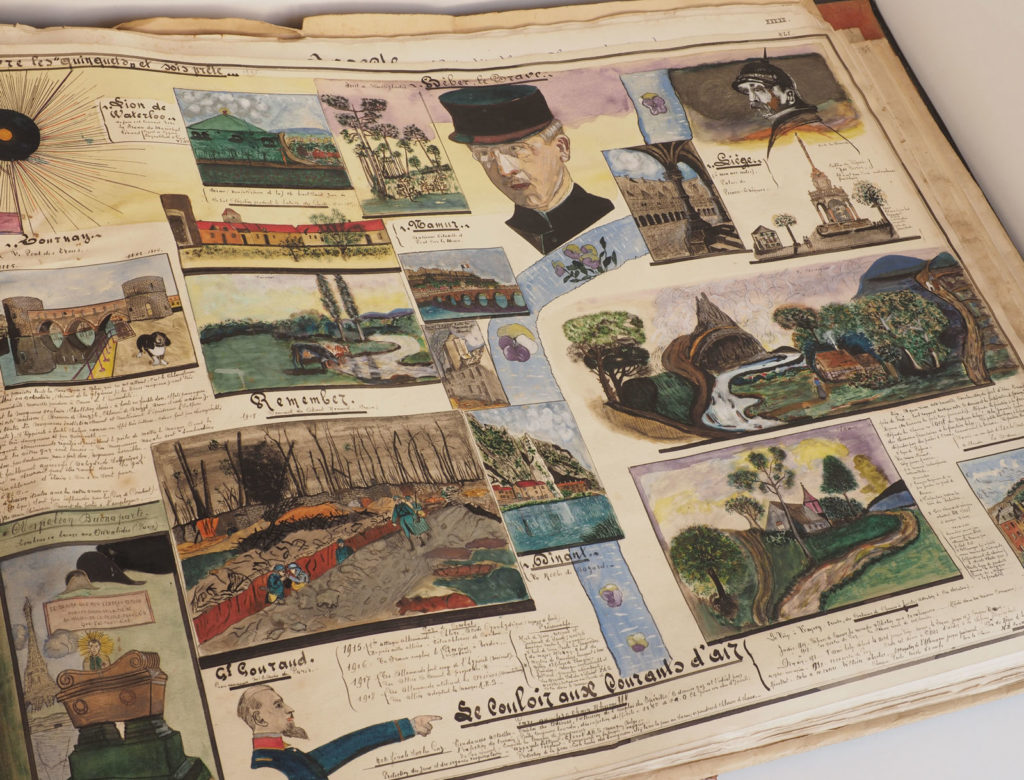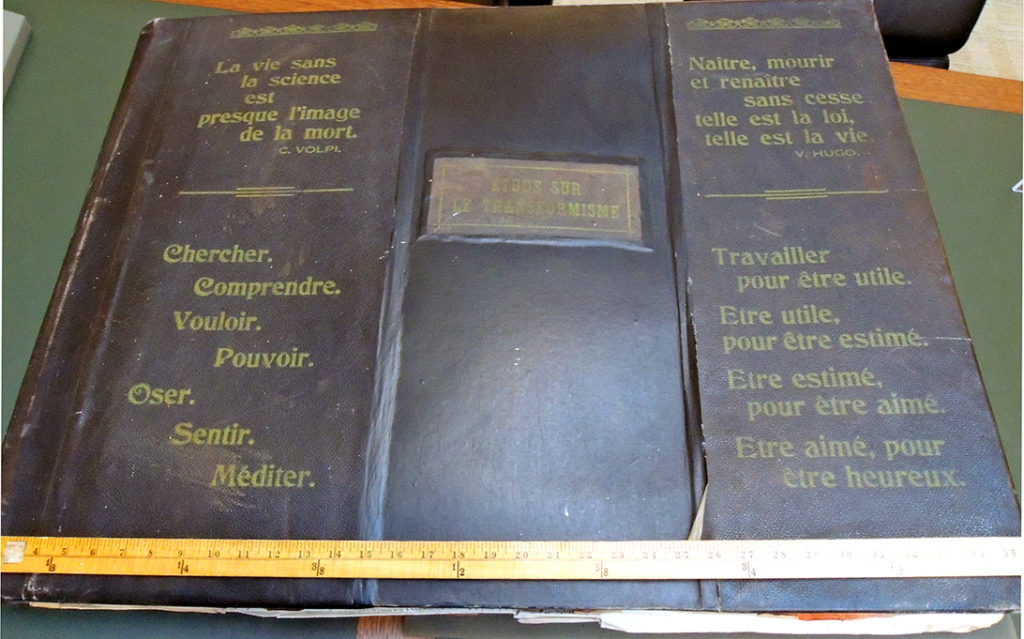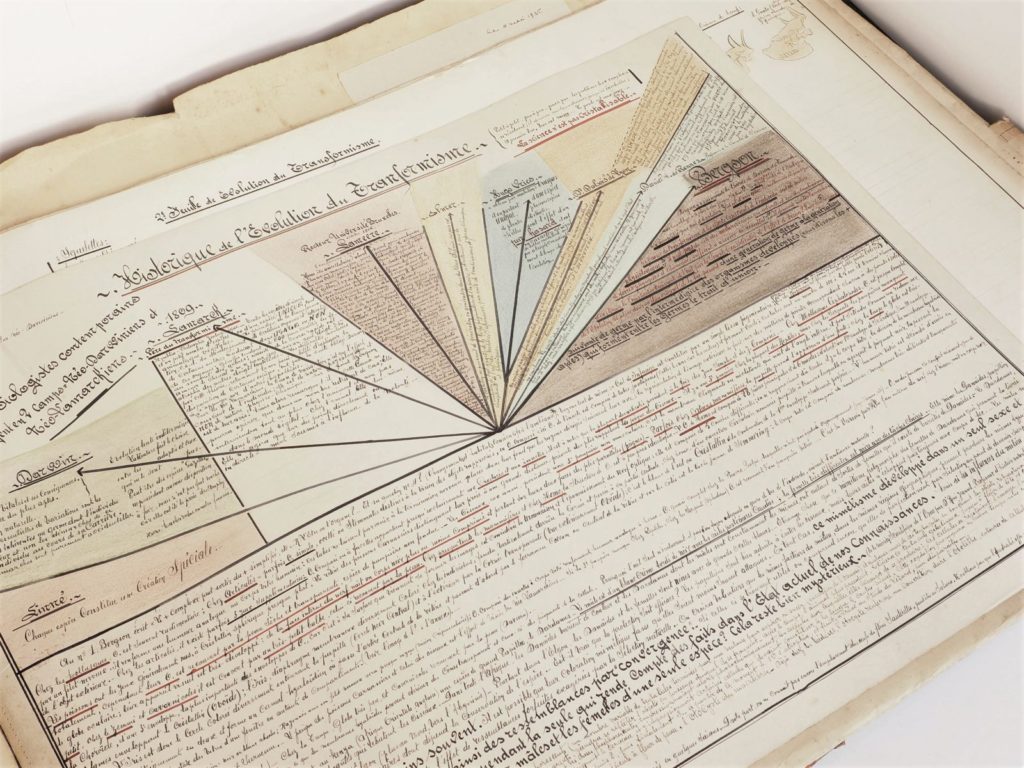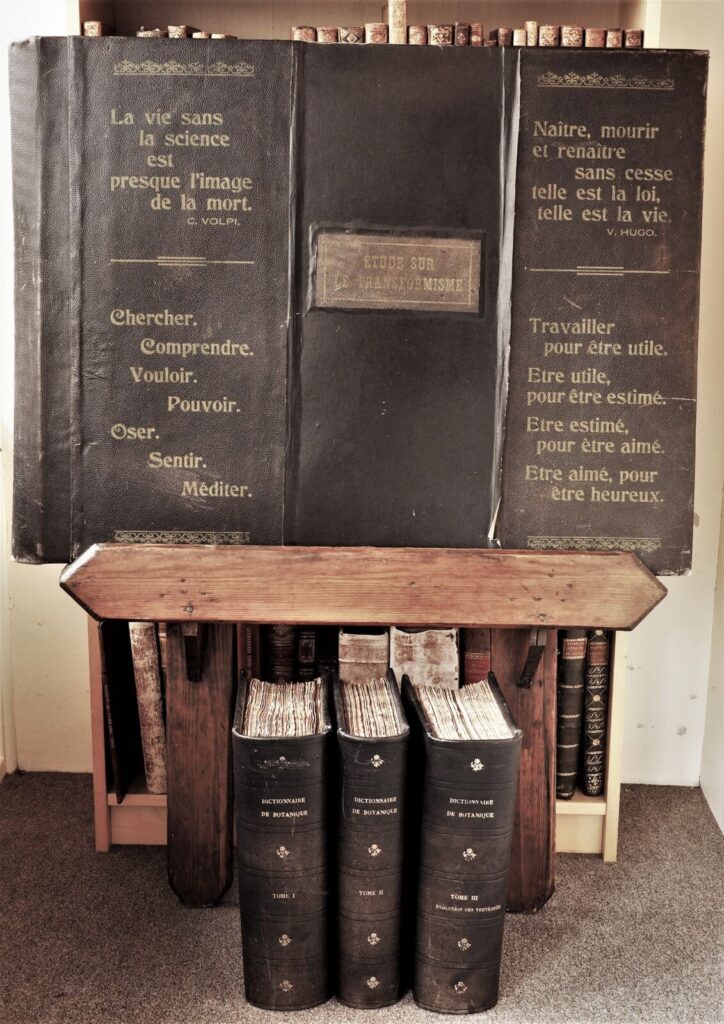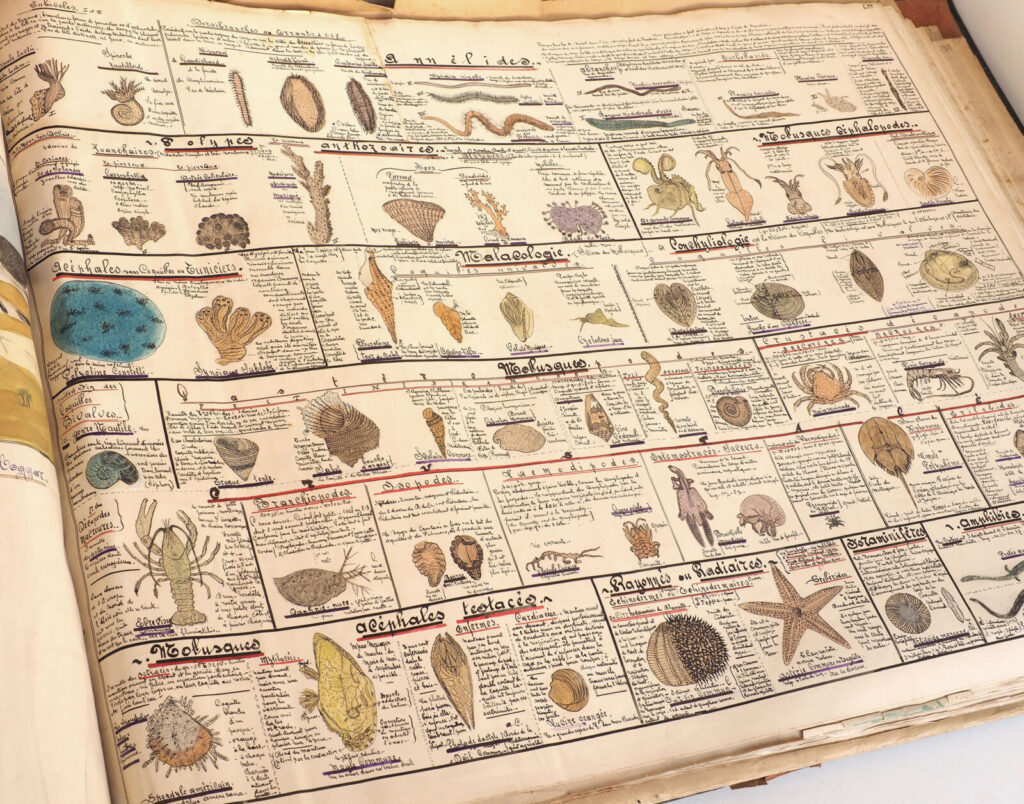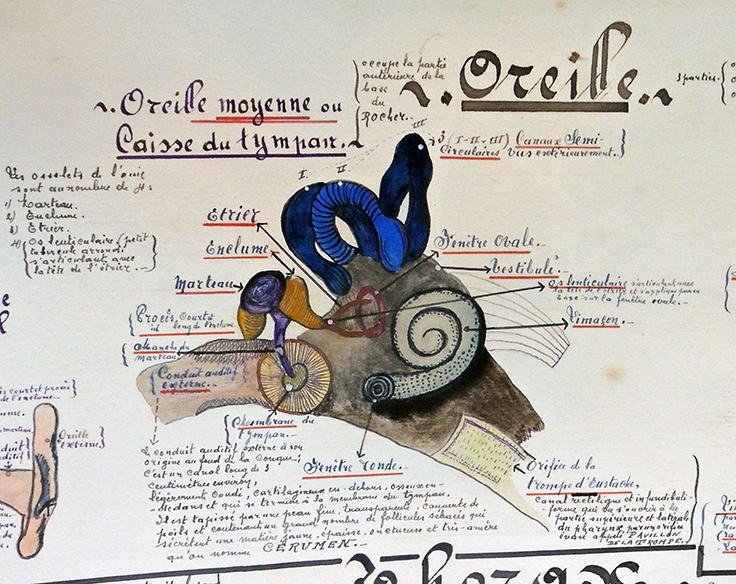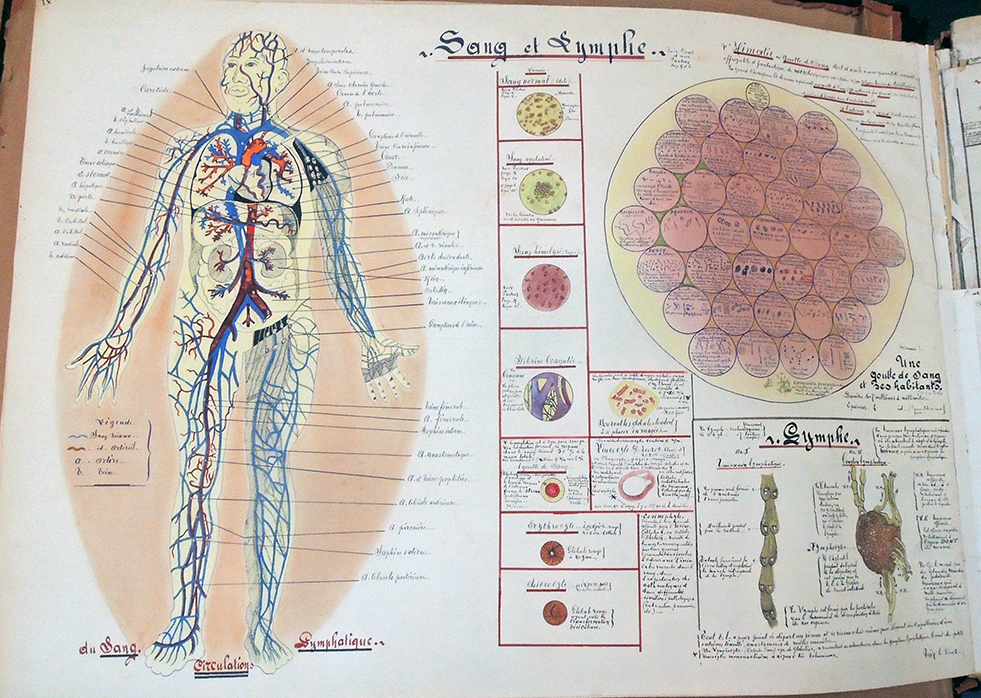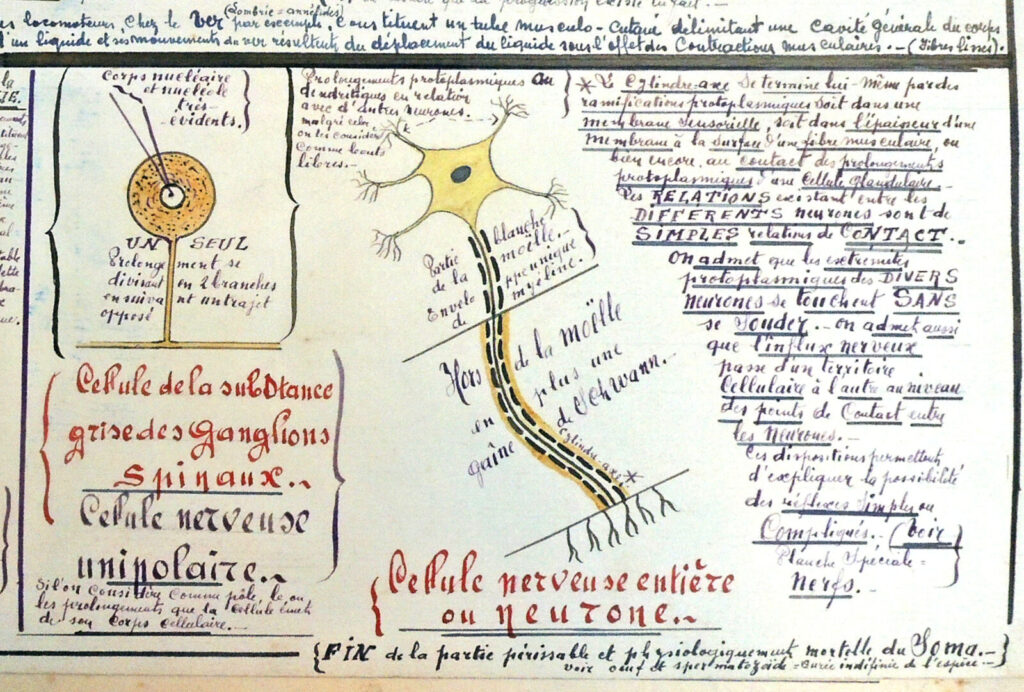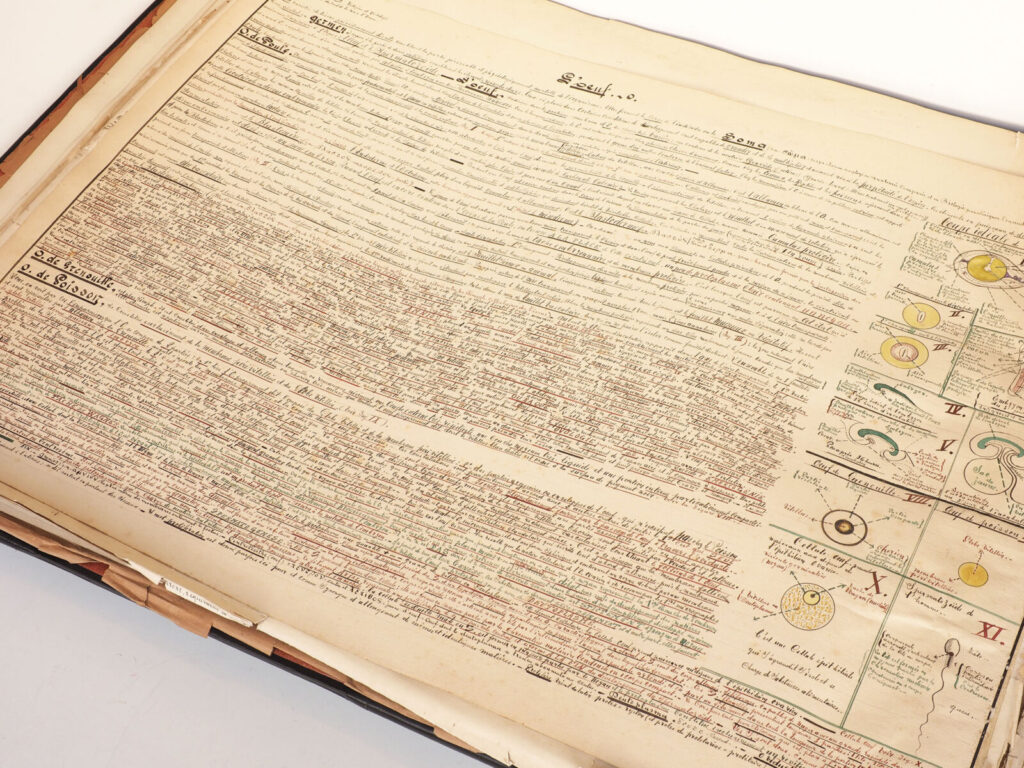J.J. Audubon spent his life tracking and painting all the birds in America. Edward Curtis spent the majority of his adult life photographing the Indians of North America. In this extraordinary set of four volumes, a Belgian natural history enthusiast or scientist or doctor spent “most of my life” writing and illustrating a study of transformism, or what we would call evolutionary theory. And if that weren’t enough, the elephant folio Étude sur la transformisme comes with a three volume Dictionnaire botanique, every page hand written and hand colored.
This massive and extraordinary gathering of knowledge addresses everything from air currents to the working of the inner ear; from geography to biology; from Charles Darwin to Victor Hugo. The books are illustrated throughout with thousands of the watercolor paintings. It has been dated from the early 20th century, although the truth is there is no date yet found in any of the volumes. We can only hope it will catch the interest of a future researcher, patient enough to read the small print and find out the truth about the books and their anonymous author.
Étude sur la transformisme holds approximately 150 leaves, many folded, all heavily illustrated in full color. The three volume Dictionnaire botanique offers more than 1200 with several thousand color diagrams, charts, and paintings.
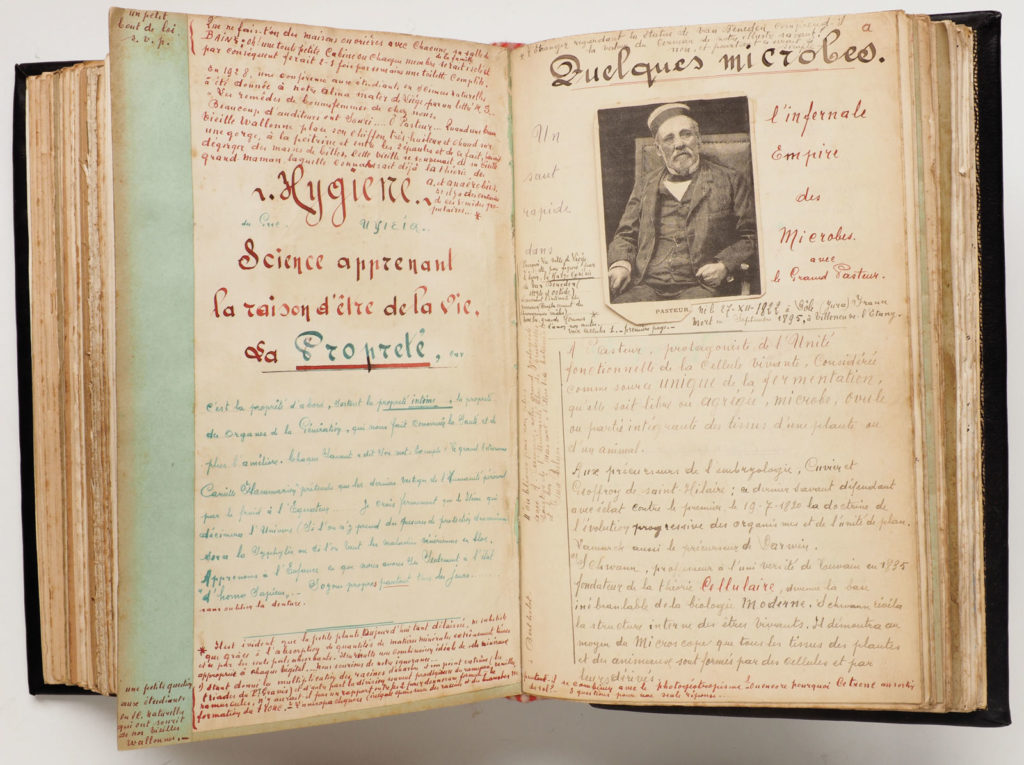 Although the sheer weight of the volume is pulling the paging from the binding, its impressive cover still holds the book together, offering four quotes to the reader:
Although the sheer weight of the volume is pulling the paging from the binding, its impressive cover still holds the book together, offering four quotes to the reader:
La vie sans science est presque l’image de la morte, C. Volpi = Life without science is almost the image of the dead
Chercher. Comprendre. Vouloir. Pouvoir. Oser. Sentir. Méditer = Search. Understand. Want to. Power. Dare. Feel. Meditate
Naître, mourir et renaître sans cesse, telle est la loi, telle est lavie. V. Hugo = To be born, to die and to be reborn without ceasing, such is the law, such is the life.
Travailler pour être estimé. Etre estimé pour être aimé. Etre aimé pour être heureux = Work to be esteemed. To be esteemed in order to be loved. To be loved to be happy

There is the name Dumoulin, but we known absolutely nothing about him or her or them. It is unlikely this refers to the French artist Louis-Jules Dumoulin (1860–1924), who founded the Société Coloniale des Artistes Français in 1908. “Dumoulin is an Orientalist painter linked to the official artistic circles and a great traveler from the various missions that will be entrusted to him. He made his first major trip outside Europe in 1888 on the occasion of an official mission to Japan ordered by the Ministry of Education.”
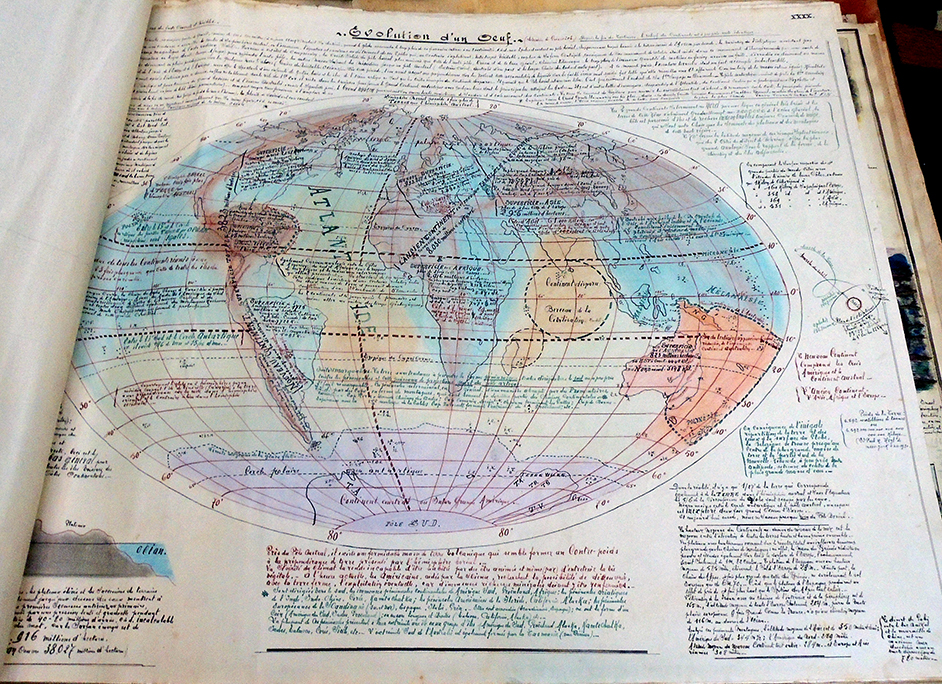
Here is the description that comes with the set:
The large folio volume is really a huge collection of charts devoted to human anatomy, animal and plant biology, the fossil record and evolution (or transformisme). Botany makes up the largest proportion, but there are sections on insects, reptiles, birds, flying lizards, marsupials and mammals. Dumoulin also had an interest in Africa and there are sections on the Sahara and on the Belgian Congo. The focus is worldwide and is drawn from reference works rather than original research, but the arrangements are highly idiosyncratic. Several evolutionary charts are attempted, mentioning Linnaeus, Darwin, Lamarck and Jussieu.
The Dictionnaire botanique is a large 3 volume compilation mainly devoted to botanical classification, from the smallest mosses and seaweeds, to exotic flowering plants and forest trees. Like the larger folio volume, these volumes are illustrated throughout, with accompanying text in coloured inks and often containing emblematic figures of human figures appropriate to the origins of the plant: including Africans and Americans. They have apparently been bound from a large number of separate files (whose stiff paper cover with labels are preserved) each devoted to a different botanical family. The third volume contains additional materials at the end, including a study on Pasteur and germs, another on insects and another on bird classification. Like the preceding parts, these are also copiously illustrated in colour.
There is a note inserted that the author hoped his/her/their work would find its way into a university. Happily, the unusual set found a home in the Graphic Arts Collection at Princeton University. Please share the few facts presented here with colleagues and let us know if you have a theory about this massive undertaking.

